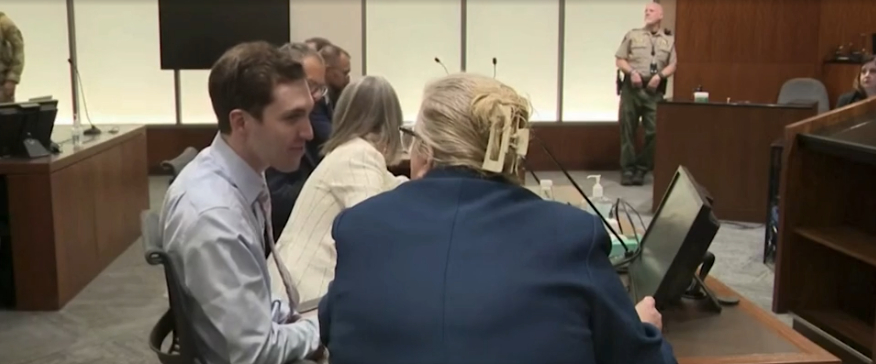A Look Back at the Terrorist Attacks of September 11, 2001
- Capitol Times

- Sep 11, 2023
- 4 min read
Introduction
September 11, 2001, remains an indelible scar on the collective consciousness of not only Americans but also the global community. The attacks were unprecedented in scale, shock, and devastation, altering the way we perceive national security, foreign policy, and even individual freedom. The impact reverberated most profoundly in Manhattan, home to the iconic twin towers of the World Trade Center. This article aims to revisit the tragic events of 9/11, understand its immediate and long-term aftermath in Manhattan, and reflect on its continuing relevance in our modern world.
The Day of the Attack
On a seemingly ordinary Tuesday morning, 19 terrorists hijacked four American airplanes. Two of these, American Airlines Flight 11 and United Airlines Flight 175, were flown into the North and South Towers of the World Trade Center in New York City's Manhattan. The impact and subsequent fires led to the collapse of these towers within hours, changing the Manhattan skyline forever and, more tragically, claiming nearly 3,000 lives.
The collapse of the towers generated a colossal dust cloud and produced a shower of debris that coated the streets of Lower Manhattan. Apart from the immediate casualties, countless first responders, office workers, and residents were exposed to a toxic cocktail of asbestos, glass fibers, and pulverized concrete, setting the stage for long-term health consequences.
Immediate Aftermath: Rescue and Recovery Operations
The aftermath of the attacks left Manhattan in chaos and despair. Subway lines were disrupted; roads were blocked, and the city was in a state of shock and disbelief. Despite these hurdles, emergency services, including firefighters, police officers, and medical personnel, immediately swung into action. Ground Zero, as the site came to be known, turned into a massive rescue and recovery operation. Hundreds of volunteers joined hands with professional rescuers, sifting through the debris in hopes of finding survivors.
The disaster also prompted a maritime evacuation, dubbed as the "boatlift," which was instrumental in moving people away from Lower Manhattan. The unified response displayed the resilience and indomitable spirit of New Yorkers and showcased the power of community in facing adversities.
Financial and Economic Consequences
The destruction of the World Trade Center, a complex that housed many businesses and financial institutions, dealt a massive blow to the economy. An estimated $30 billion in physical damages were suffered, and the loss of human capital was immeasurable. Wall Street was temporarily paralyzed, and the New York Stock Exchange remained closed until September 17. When trading resumed, the markets faced steep declines, reflecting the uncertainty that gripped the nation.
Reconstruction and revitalization efforts began almost immediately. The Federal Emergency Management Agency (FEMA) and other federal agencies disbursed billions of dollars to aid the recovery process. However, many small businesses struggled to recover, and the Lower Manhattan economy took years to regain its footing.
Health Impacts
The adverse health effects of the 9/11 attacks became increasingly apparent in the following years. Those who were present near Ground Zero reported a variety of health issues, including respiratory problems, cancer, and post-traumatic stress disorder (PTSD). The Zadroga 9/11 Health and Compensation Act of 2010 established a health program to monitor and treat individuals affected by the toxins at Ground Zero. As of 2021, more than 3,900 first responders and survivors have died due to 9/11-related illnesses, surpassing the initial death toll of the attacks.
Cultural and Social Changes
The attacks had a profound impact on American identity and its global interactions. The subsequent years saw stringent security protocols, both nationally and internationally. Air travel was never the same again, with the establishment of the Transportation Security Administration (TSA) and the implementation of stringent security measures.
In Manhattan, the rebuilding efforts included the creation of the 9/11 Memorial and Museum, a poignant tribute to the lives lost. The new One World Trade Center stands as a testament to resilience and unity. However, the societal fabric was strained as cases of Islamophobia rose in the aftermath of the attacks.
Urban Planning and Architecture
Architecturally, Manhattan underwent a transformative phase, both in design and function. The Freedom Tower, as the One World Trade Center is colloquially known, was designed with fortified materials and advanced safety features. Building codes were revised to include stricter fire safety and evacuation protocols.
In terms of urban planning, the attacks accelerated the conversation on resilient cities. It led to a rethinking of how public spaces and key infrastructure could be designed to be more resilient to both natural and human-made disasters.
Ongoing Relevance
Nearly a quarter-century after the attacks, the events of 9/11 and its aftermath continue to influence political decisions, national security policies, and collective psychology. Issues surrounding terrorism, immigration, surveillance, and international diplomacy are all seen through a lens partly shaped by those events.
Conclusion
The terrorist attacks of September 11, 2001, were more than just an assault on iconic buildings; they were an attack on a way of life, on values held dear by millions. The aftermath in Manhattan demonstrated the resilience of a city and a nation, but it also exposed vulnerabilities and spurred significant changes in various aspects of American life. While the city has rebuilt and moved forward, the scars remain, and the lessons continue to shape the world in intricate ways. Remembering 9/11 is not merely an act of looking back but a solemn responsibility to carry its lessons into the future.










Comments